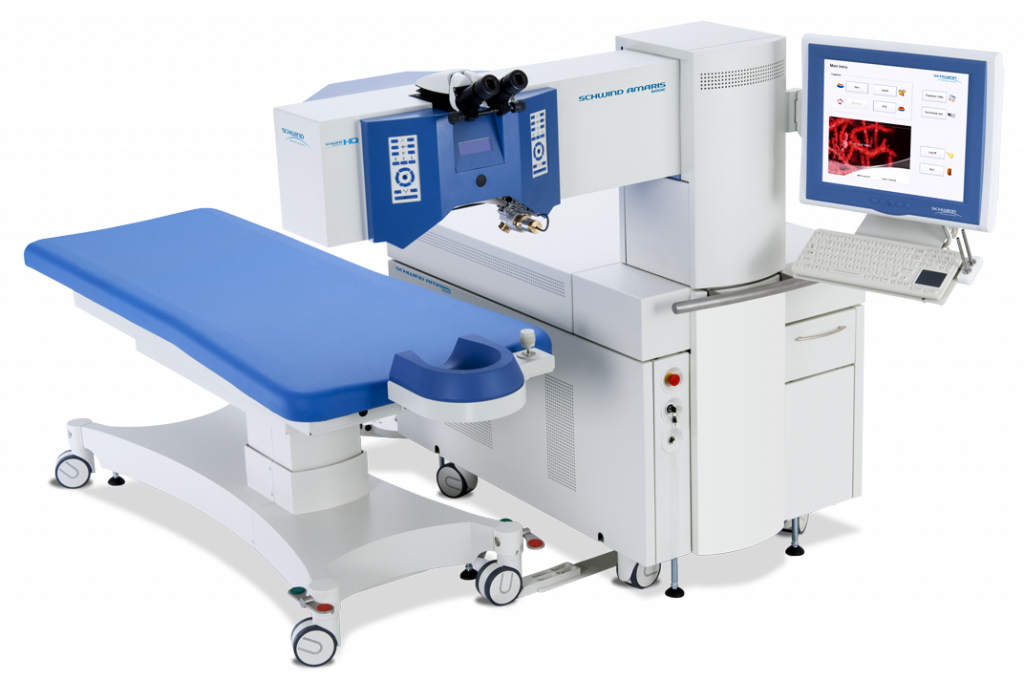The troubles of constantly wearing or breaking glasses, worries about changing contact lenses or engaging in sports activities, the desire to contribute to more sustainable consumption, and the willingness to live more comfortably encourage thinking about laser vision surgery. What should you know about the procedure and how to choose the most appropriate method of laser vision correction?
The New Generation of Lasers Efficiently Ensures the Result
According to Eglė Juzėnaitė, an ophthalmologist at the Lirema Eye Clinic, the most common visual disorders, such as myopia, farsightedness, or astigmatism, can quickly and safely be corrected by a laser.
“The laser, recording the position of the eye in as many as 5 dimensions, performs the surgery of both eyes in just a few minutes and allows to achieve a very accurate result. Not only the position of the eye is analysed, but also the position of the pupil – when it deviates to the side, the laser stops, and it is possible to continue the procedure from where the laser stopped the work – it is completely safe,” says E. Juzėnaitė.
The microsurgeon also emphasises that laser vision surgery is not for everyone. It is only possible at the age of 18 when the eyeball is fully formed until around the age of 45, before the natural process of stiffening the eye lens, called presbyopia, begins, and reading glasses are needed.
“When a patient arrives for a consultation, we ask if their vision has been stable for at least one year, whether there are other chronic diseases that may affect vision, such as diabetes, glaucoma. If the patient is a woman, we ask if she is not pregnant or breastfeeding at the moment. We also perform all detailed vision tests, and only then do we confirm whether laser vision correction is possible for the patient,” the doctor clarifies.
According to the microsurgeon, by constantly working with the largest market-leading and most reliable laser manufacturers such as Schwind eye tech solutions, Carl Zeiss AG and Ziemer Group AG, the procedure can be performed quickly and in a particular protective way to the cornea.
Sustainable Eye Surgery Standards
Upon arrival for a consultation on laser eye surgery, doctors conduct detailed vision tests and inquire about the patient’s lifestyle, work, and activities.
“Laser correction is available the day after the consultation. However, we do not recommend the procedure on the same day because, during the consultation, the pupils are enlarged, which must be shrunk during the operation. We always choose the standard only taking into account the specifics of the patient’s work, leisure time and detailed research results,” says E. Juzėnaitė.
According to the doctor, several of the most popular standards are offered in the laser vision correction market, but few who enter the ophthalmologist’s office know their differences.
SMART standard (LASEK or TransPRK)
The SMART standard, also known as incision-free, is performed at Lirema Eye Clinics using the new generation of German manufacturers’ SCHWIND eye-tech-solutions or Carl Zeiss Meditec excimer lasers. The international names LASEK or TransPRK are acronyms, which means multi-term abbreviations for a surgical procedure in which a laser is used to change the shape of the cornea surgically and correct vision (LASEK – laser-assisted epithelial keratomileusis, TransPRK – trans-epithelial photorefractive keratectomy). The corneal epithelium is exfoliated with a medical solution according to the SMART standard. Then, the upper part of the cornea is exposed to the laser beam without touch, its shape is changed, and vision improves
SMARTSURFACE standard (LASEK or TransPRK)
This type of operation is performed using a new generation German manufacturer SCHWIND eye-tech-solutions laser. The name SmartSurfACE comes from the exact name of the laser operating program. In the SmartSurfACE standard, the corneal epithelium is laser-evaporated, distinguishing SMART and SMARTSURFACE vision corrections. The superficial part of the cornea is treated similarly as in the first case with a laser, and vision is improved.
PREMIUM standard (LASIK)
With this standard, the surgery is performed by two lasers – the femtosecond Swiss laser Ziemer and the new generation excimer German laser SCHWIND eye-tech-solutions. One laser forms and retracts the corneal patch, the other part of the cornea is exposed to the laser beam, and the patch is inverted. The international name LASIK is an English acronym for laser-assisted in situ keratomileusis, meaning the process by which the cornea is reshaped and light rays are refracted correctly.
“With the first two standards of laser vision surgery, the cornea of the eye looks as if there has been no surgery. The patient can live without glasses immediately, and the full effect of the operation is achieved within a few weeks. These methods are offered to those who like to live actively, engage in contact sports or other activities with a higher risk of eye injuries,” emphasises E. Juzėnaitė.
According to the microsurgeon, the PREMIUM standard is especially suitable for those who do not tolerate pain, live abroad or come to a country only for a short time when speedy eye healing is expected.
“By any standard, the result of the procedure is the same. However, the execution of the operation and the period of eye healing are different. Having been on the market for almost two decades, with the latest lasers in our clinics and working with microsurgeons with many years of experience, we can ensure the safest vision treatments for the patient,” the doctor concludes.
You can check if laser eye surgery is available to you online for free.
